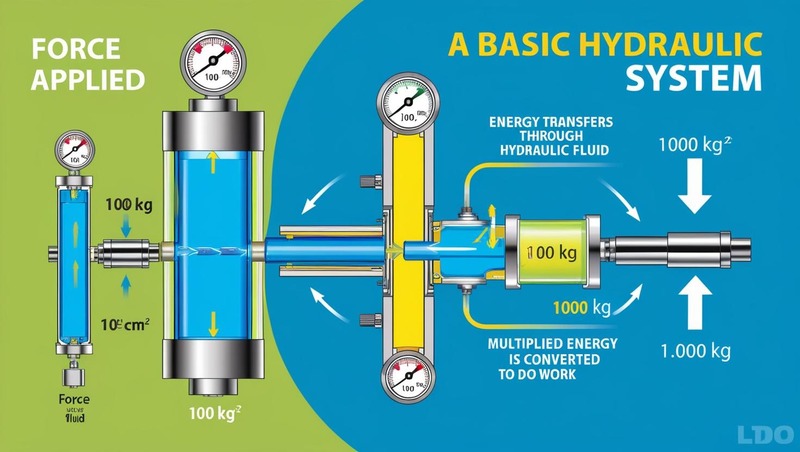The global hydraulics market is anticipated to grow from USD 39.40 million in 2025 to USD 44.26 million in 2030, at a compound annual growth rate (CAGR) of 2.4%. The hydraulic market is primarily driven by the growing demand for automation and heavy machinery across several industries, such as construction, agriculture, and manufacturing. Hydraulic systems are valued for their high power density, reliability, and efficiency in handling heavy loads, making them essential for excavators, tractors, industrial presses, and other equipment.
A recent trend reshaping the hydraulic market is the development of electro-hydraulic systems. These systems combine traditional hydraulics with electronic controls to enhance precision, energy efficiency, and automation capabilities. This shift enables smart diagnostics, remote monitoring, and adaptive performance, positioning hydraulics for greater relevance in modern, digitally connected industrial environments.
Download PDF Brochure @ https://www.marketsandmarkets.com/pdfdownloadNew.asp?id=209607944

Based on type, mobile hydraulic systems are estimated to record a higher CAGR than industrial hydraulic systems during the forecast period (2025–2030). Growing infrastructure development and the mechanization of agricultural activities in emerging economies are the key factors driving demand for mobile hydraulic systems integrated into equipment such as excavators, tractors, and loaders. Additionally, the rising adoption of heavy-duty and off-highway vehicles in mining and forestry operations further supports this growth. Technological advancements such as the introduction of mobile electro-hydraulic systems and IoT-enabled solutions enhance efficiency and appeal. The trend toward compact, versatile machinery suitable for urban construction also contributes to the increasing preference for mobile hydraulic solutions.
In the component segment, cylinders are expected to exhibit the highest CAGR due to their vital role in providing linear motion and force in various applications. Hydraulic cylinders are extensively used in construction machinery, agricultural equipment, material handling systems, and industrial machines, all witnessing increased global demand. The growth in infrastructure development, especially in emerging economies, such as Vietnam and Indonesia, and the rising trend of agricultural mechanization are the major factors driving the need for hydraulic cylinders. Technological advances, such as the emergence of better sealing systems, corrosion-resistant materials, and enhanced durability, are making cylinders more efficient and reliable in demanding environments. The expansion of mobile hydraulic applications, where cylinders are key components, and the increasing automation of industrial processes also contribute to the strong growth of this segment.
The US stands as the largest market in the global hydraulics market, driven by its extensive industrial base, advanced manufacturing infrastructure, and ongoing investments in automation and construction. The country has a robust presence in key end-use industries, such as automotive, oil & gas, construction, and industrial machinery, which heavily rely on hydraulic systems for precision control and power transmission. Additionally, the US has been at the forefront of adopting Industry 4.0 technologies, which has led to the modernization of hydraulic equipment with smart components and integrated sensors. In the oil & gas sector, the US is among the world’s largest producers, particularly due to its shale energy operations. Hydraulic fracturing and directional drilling operations require high-pressure hydraulic equipment, which creates sustained demand for advanced hydraulic pumps, valves, and accumulators. This sector alone drives a significant portion of the domestic hydraulics market. Similarly, the US mining industry, one of the most productive globally in terms of output and efficiency, relies heavily on hydraulic systems in equipment such as excavators, haul trucks, crushers, and drills to ensure safe and efficient operations in surface and underground mines. In agriculture, the US is one of the top producers of corn, soybeans, wheat, and other crops, and maintains one of the most mechanized and large-scale farming systems globally. Hydraulic systems play a central role in modern agricultural machinery such as combine harvesters, seeders, balers, and sprayers, providing the necessary force for lifting, steering, and precision controls. With increasing focus on improving farm productivity and reducing labor dependency, demand for advanced hydraulic components in agriculture remains strong. Additionally, the growth of the logistics and warehousing sector in the US has increased demand for hydraulic-powered equipment such as forklifts, pallet stackers, and dock levelers. These systems ensure efficient goods movement and inventory handling in distribution centers and fulfillment warehouses nationwide.
Key players in the hydraulics market, namely Bosch Rexroth AG (Germany), Danfoss (Denmark), Kawasaki Heavy Industries, Ltd. (Japan), PARKER HANNIFIN CORP (US), and KYB Corporation (Japan) own a large and diversified product portfolio with a strong global footprint. With their broad base of products and operations worldwide, these companies are focused on expanding their reach in this dynamic market. To capitalize on growth opportunities in the hydraulics market, these companies can invest in smart, energy-efficient electrohydraulic systems aligned with Industry 4.0 trends and global sustainability goals. Expanding into emerging markets, enhancing aftermarket services, and pursuing strategic partnerships or acquisitions will enable these firms to broaden their global footprint and offer customized, high-performance solutions across diverse industrial applications.
